Fermented Fruit Juice or FFJ is made from sweet ripe fruits, fruit vegetables and root crops. Thoroughly blended with crude sugar or molasses and stored for a short period of time, the fermented extract is applied to the plants to promote flowering and fruit setting.
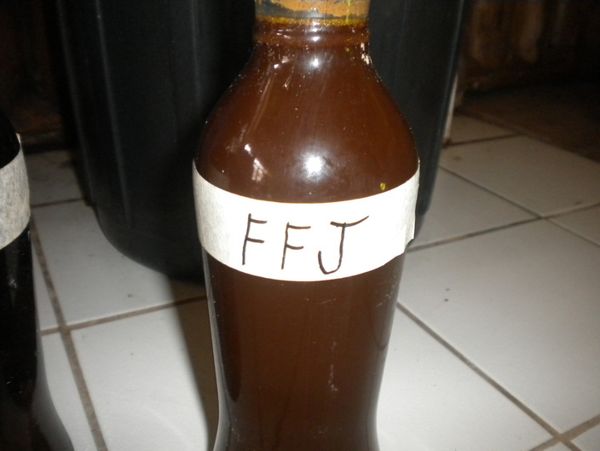
Choosing the materials for Fermented Fruit Juice
You must choose materials that are:
– locally produced
– free from insect pests and diseases not fit for human consumption
Materials needed in making Fermented Fruit Juice
* Locally produced sweet ripe fruits like mango, banana, papaya, strawberry and chico; ripe squash fruit and matured carrot; and root crops particularly camote, cassava and gabi. Citrus fruits are not recommended. You can make Fermented Fruit Juice from single material or a combination of materials.
The extract from the combination of banana, papaya, and squash have been proven to be effective in flower induction and fruit setting by many organic farmers.
* You can use either crude sugar or molasses or whichever is available or can be purchased at lower cost.
* You will also need ceramic pots or plastic pail, basin, net bag or cloth bag, paper or cloth for cover, string, stone as weight, bolo, chopping board, marking pen, and glass jars for storage.
Steps in Making Fermented Fruit Juice
1. Collect ripe fruits or vegetables that are already available or in season, for example, if squash is available, then make fermented squash juice. There are plenty of materials to be used so you can make different kinds of Fermented Fruit Juice. Use any materials that are free from insect pests and diseases.
2. Chop the materials into small pieces so that the juice can be easily extracted.
3. Put 1 kg chopped materials in a basin, add 1 kg crude sugar or molasses, and then mix thoroughly with your bare hands. You must make sure that all chopped materials are coated with sugar or molasses so that the juice can be extracted easily.
4. Put the mixture in a net bag or cloth bag. This is done so that the extracted juice will ooze from all sides of the bag. Put the bagged mixture in a ceramic pot or plastic pail, and put weight to compress the mixture. Stone is a good material used to weigh down the mixture.
5. Cover the pot or pail with paper or cloth and secure with a string or rubber band. Paper or cloth is used as cover to allow some air to get inside the pot or pail and for the gas that is being produced during the fermentation process to escape. On the cover, write the date of processing and the expected date of harvest.
6. Store the container with the bagged mixture for 7 days in a cool dry shady place. Make sure that the storage area is not infested with cockroaches or mice, because they might feed on the mixture and contaminate the extract. In 7 days, plant juice is extracted and fermented. The fruit extract will change its color from yellow orange to brown, and will smell sweet and alcoholic. After 7 days, lift the bagged mixture and squeeze hard to get the remaining extracts.
7. Collect the fermented extracts and preserve in dark colored glass jar. To cover the jar, use paper or cloth to allow the gas to escape during further fermentation, then, store in a cool, shady place. You may add the fruit residue to compost pile to hasten decomposition or you can apply it to the garden plots as source of organic matter. You can use your Fermented Fruit Juice more effectively if it is stored for another one week after completion.
Uses and rates of application of Fermented Fruit Juice
* As flower inducer and fruit setter – Fermented Fruit Juice made from a combination of ripe fruits of banana, papaya and squash have been proven by many organic farmers to be effective when sprayed on the leaves at the rate of 2 to 4 tbsp/gallon of water at the onset of flowering up to fruit setting. These ripe fruits contain phosphorous and potassium which are necessary during the flowering and fruit setting stage.
* As soil microorganism activity accelerator – Fermented Fruit Juice is applied directly to the soil at the rate of 1tsp/liter of water. The carbohydrates and sugar content of Fermented Fruit Juice serve as source of energy of soil microorganism, thereby, accelerating their activity. Increased microbial activities result to the availability of nutrients for plant’s uptake.
* As spray to animal beddings to hasten manure decomposition – Fermented Fruit Juice contains beneficial microorganisms that help in the decomposition process.
* As a nutritious drink – a 20% Fermented Fruit Juice solution makes an excellent drink for both human and livestock.
Source: e-extension.gov.ph
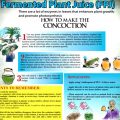

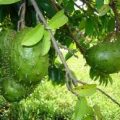
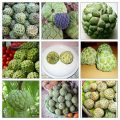

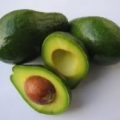

Choose materials not fit for human consumption but then excellent drink for both human and livestock? Please enlighten me.
who’s the writer for this article?
Thanks…very informative
Ei may i ask what is the assume guaranteed analysis for this mixture? Can i use papaya fruits only? Please response.
Very informative
we did this (y)
Cost Effective .. ^_^
thanks
thanks for the information…i try ko ni.
naka try najud koo..
(y)
it is the most effective than other synthetic chemicals.
i want to try it
we have been tried that one in school and its effective and the procedures are much simple and easy 🙂
anong info ba na iba iba ang tinutukoy mo?
madali lang kea lng iba iba ang info,,,